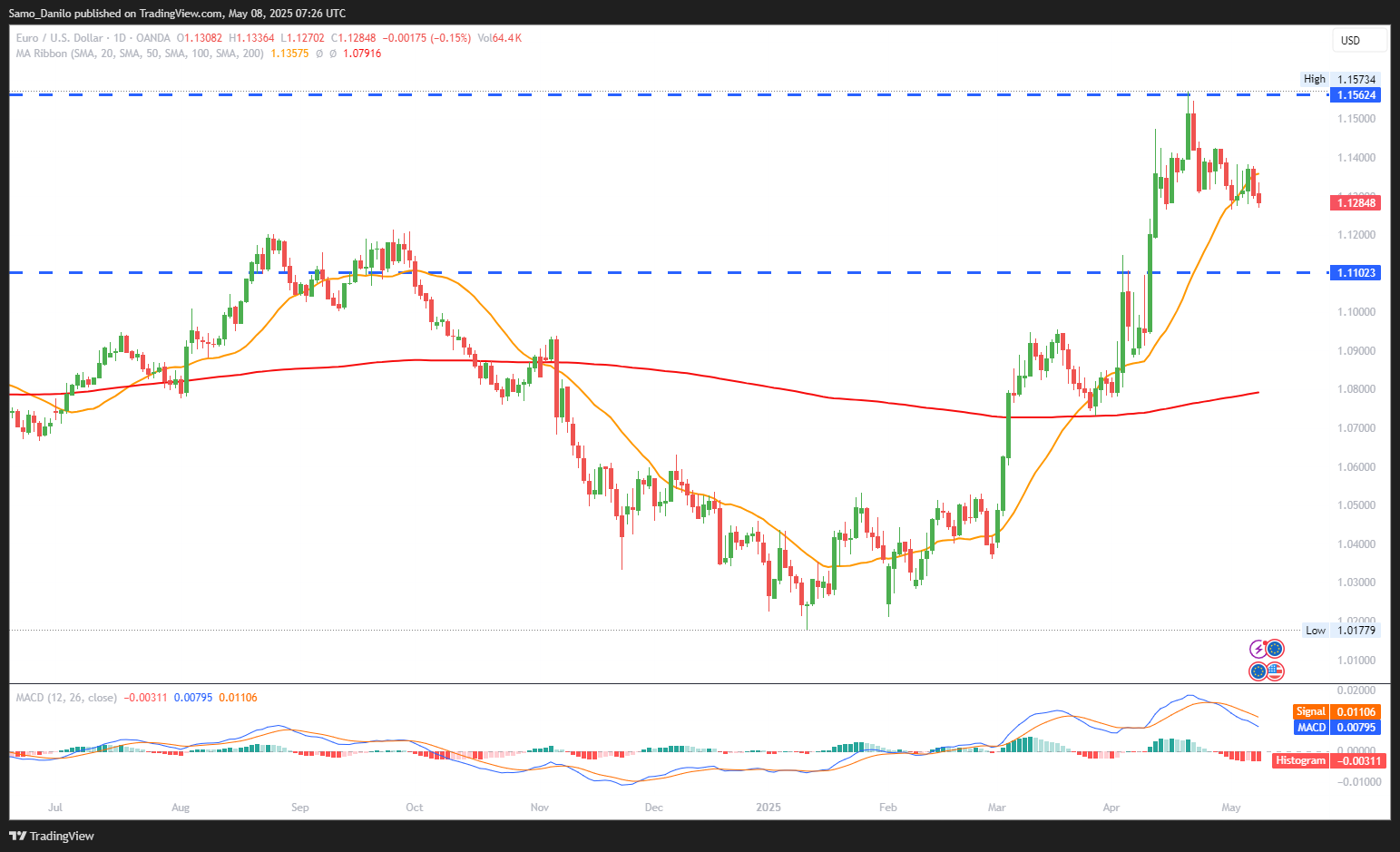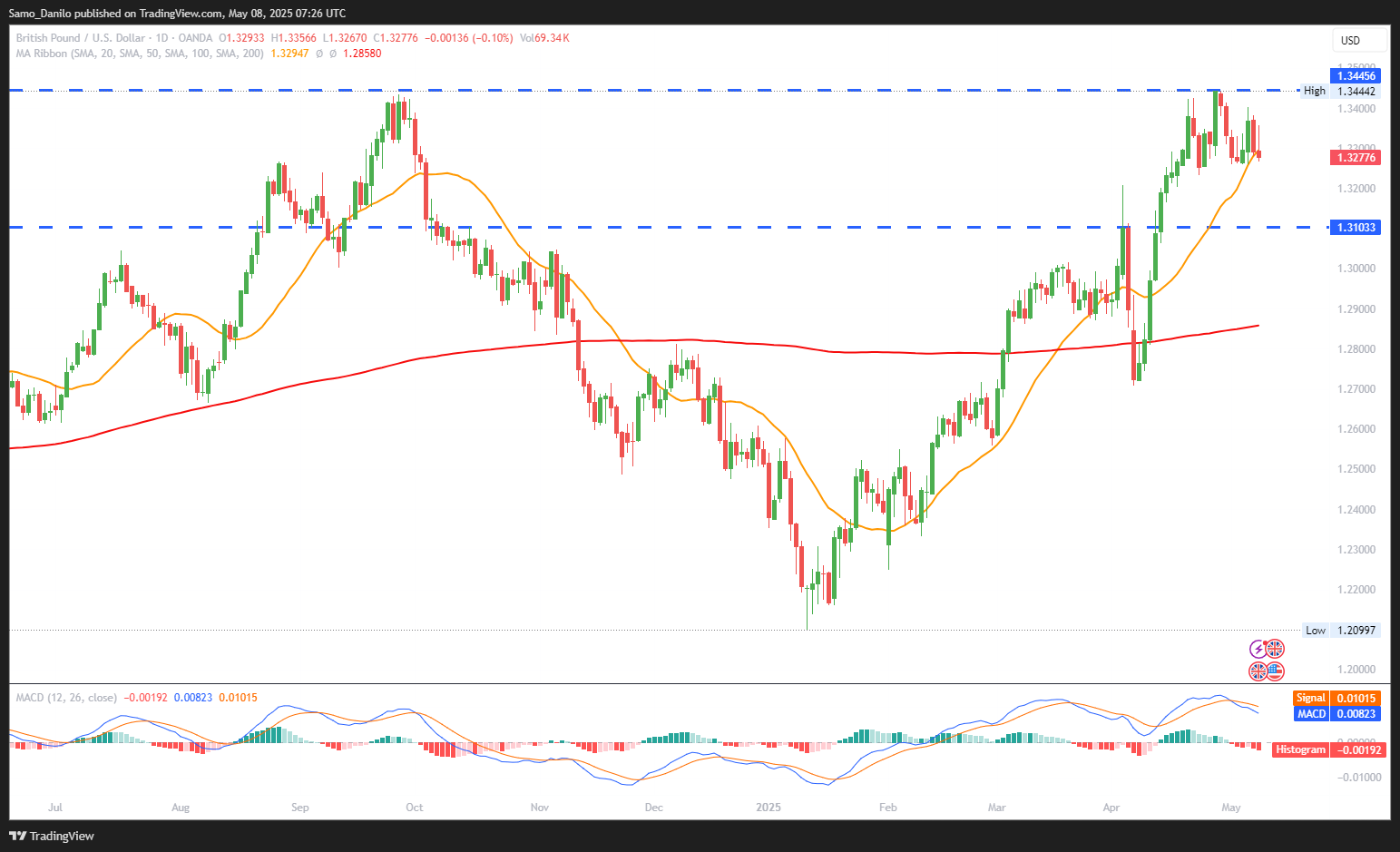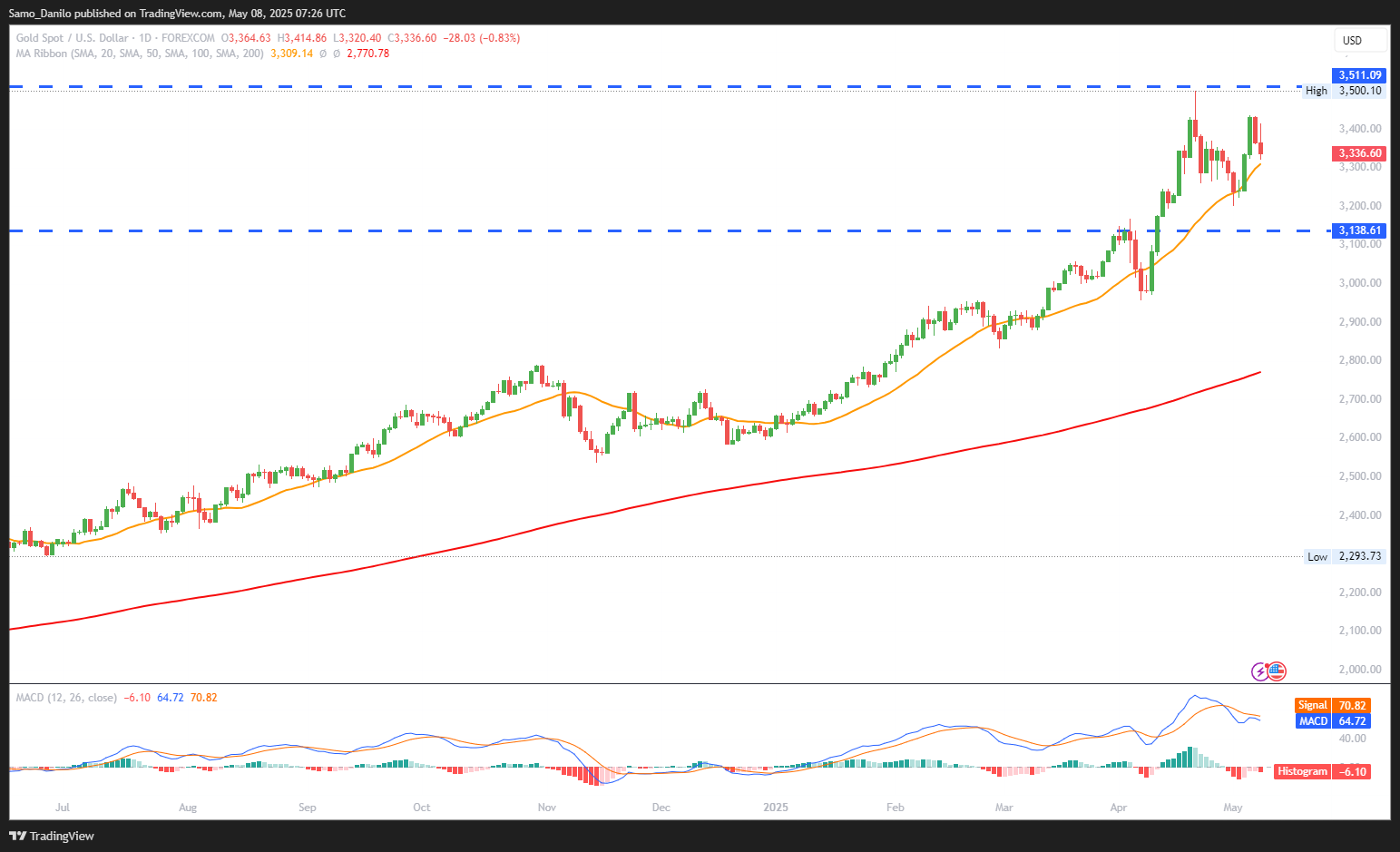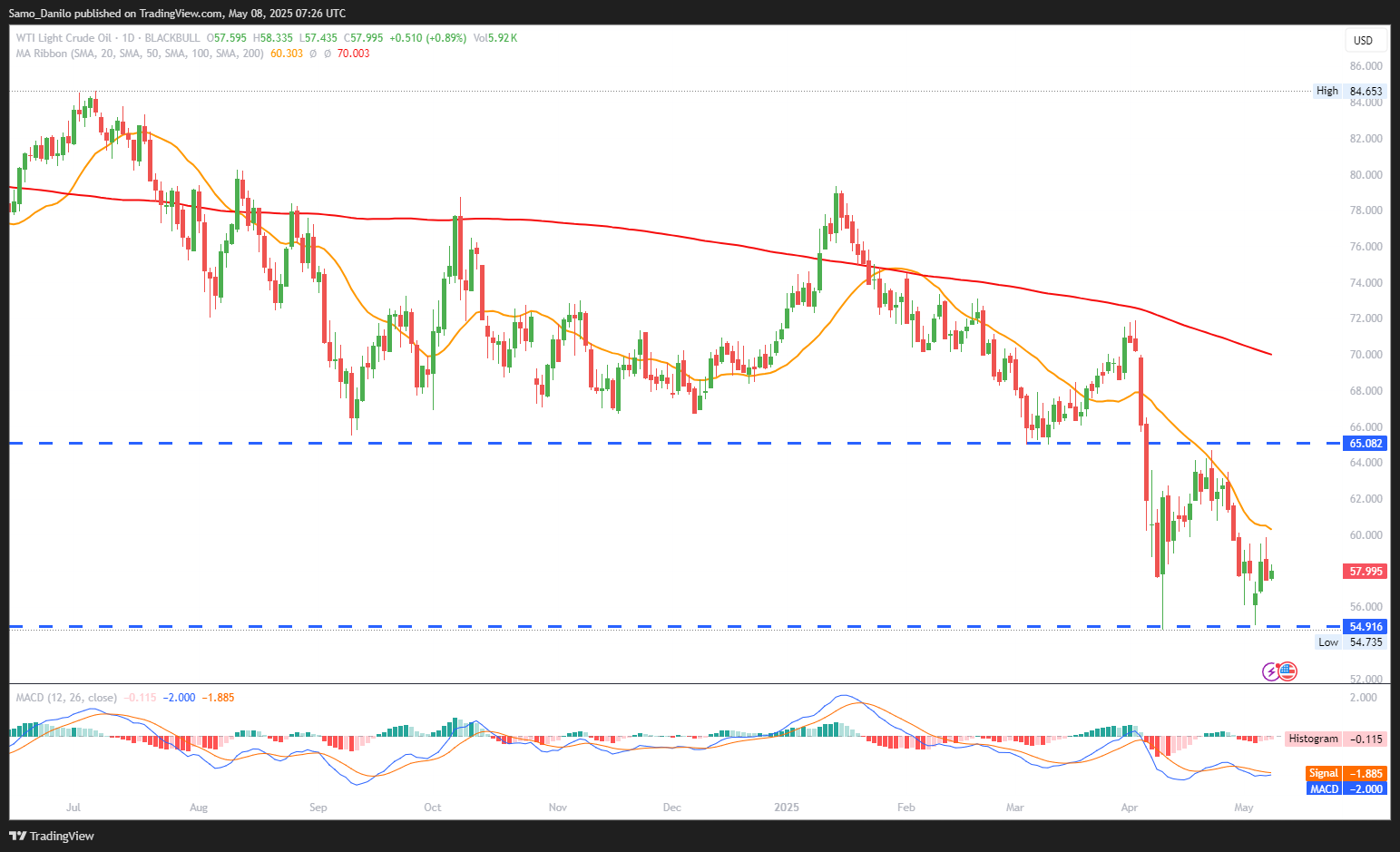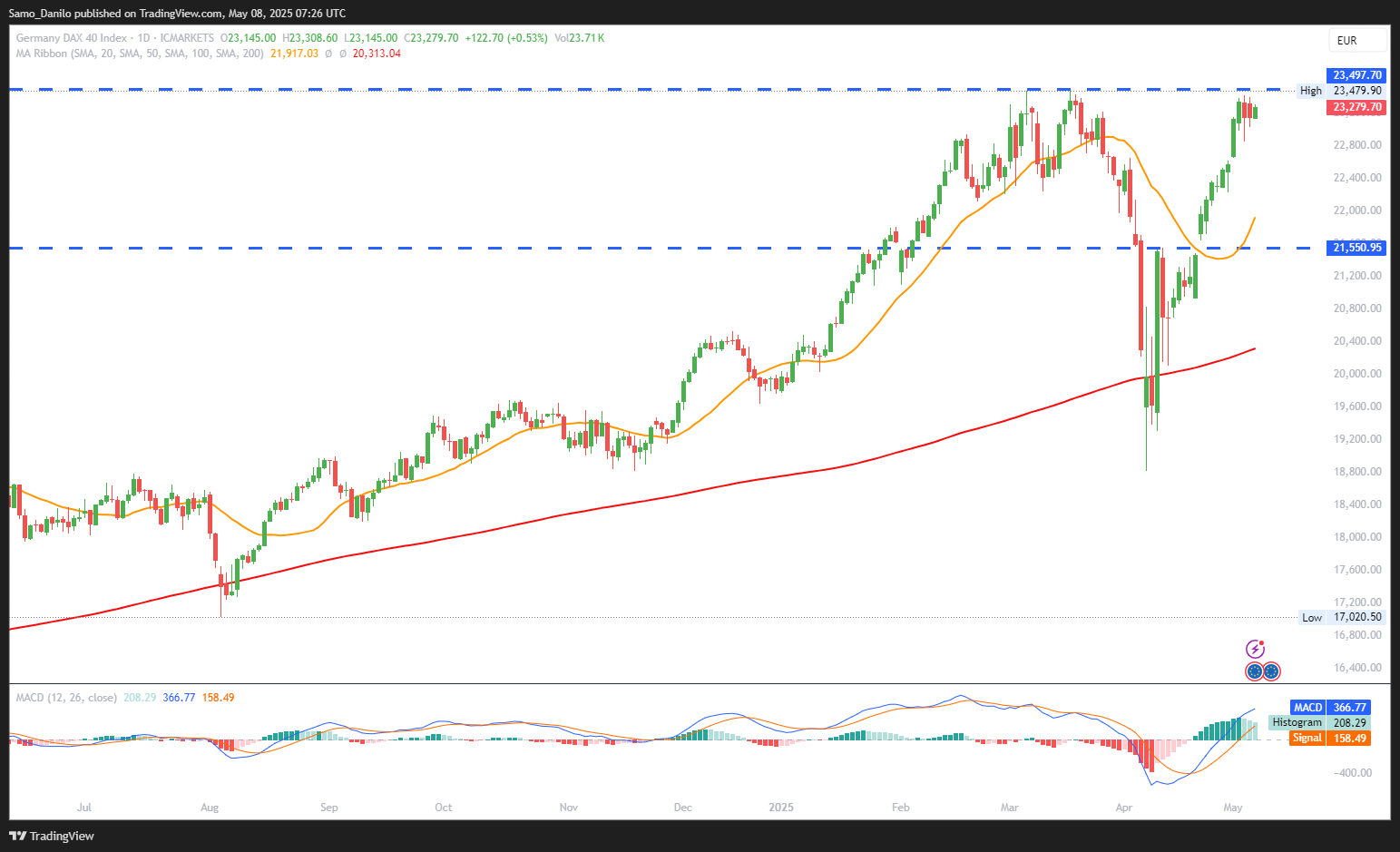EURUSD
- EUR/USD Price: The EUR/USD pair hovered near the 1.1300 level on Wednesday, reflecting investor uncertainty and a lack of fresh directional drivers.
- Fed's Caution: The Federal Reserve kept rates unchanged, citing continued strength in employment and economic activity, but highlighted increased downside risks stemming from tariffs and trade policy uncertainty. This has led to mixed market interpretations.
- Rate Cut Odds: While a July quarter-point rate cut remains the base case, CME FedWatch data now show a 30% chance that rates stay unchanged, softening confidence in a seamless shift to monetary easing.
- US Fiscal Outlook: Treasury Secretary Scott Bessent voiced optimism about fiscal dynamics, stating he "believes" the US debt-to-GDP ratio will improve next year, helping soothe market anxiety around long-term debt sustainability.
- Eurozone Data: With the European economic calendar lacking major releases, euro traders remain fixated on US monetary policy signals. The limited Eurozone catalysts leave the EUR/USD pair susceptible to dollar-driven moves in the near term.
Closing statement: EUR/USD remains directionless in the short term, trapped between cautious Fed messaging and a quiet Eurozone calendar. Any breakout will likely depend on stronger US data or fresh developments in Fed communication.
GBPUSD
- GBP/USD Price: The GBP/USD pair slipped beneath the key 1.3300 level, reflecting growing hesitation among traders. The pair remains stuck in a short-term consolidation range, weighed by cautious sentiment and conflicting policy signals.
- Fed Chair: In a notably cautious press briefing, Fed Chair Jerome Powell warned that persistent US trade tariffs may disrupt the Fed’s inflation and employment targets for the remainder of the year, casting a shadow on broader market risk appetite.
- US-UK Trade Deal: Anticipation builds around Thursday’s expected announcement from President Trump on a framework trade deal with the UK, per reports from The New York Times. This could offer some medium-term support for the pound if confirmed.
- BoE Rate Cut: The Bank of England is broadly expected to deliver a 25 bps cut on Thursday, marking its fourth cut since 2023 peak rates. Markets have largely priced this in, keeping GBP/USD movements relatively subdued ahead of the event.
- Policy Uncertainty: Despite the potential trade deal news, overall market sentiment remains fragile, driven by concerns over tariff impacts and central bank divergence. GBP/USD traders are cautious heading into the dual risk events from the Fed and BoE.
Closing statement: GBP/USD remains under pressure below 1.3300, with near-term direction likely to hinge on the BoE’s rate decision and clarity around the anticipated US-UK trade deal. Traders should watch for volatility spikes around these announcements.
XAUUSD
- XAU/USD Price: Gold (XAU/USD) pulled back from the $3,414–3,415 area, giving up early Asian session gains as intraday sellers emerged. The retreat toward the lower end of the range reflects ongoing uncertainty and profit-taking behavior.
- Hawkish Pause: The Federal Reserve’s decision to hold rates steady while maintaining a hawkish stance has helped support both the US Dollar and Treasury yields, applying modest downside pressure to gold as a non-yielding asset.
- Trump's Statement: President Trump’s comments that he is in "no real hurry" to finalize a US-China trade deal have cooled risk sentiment, offering a mild safety bid for gold, although not enough to sustain bullish momentum amid a strong USD.
- Geopolitical Tensions: Gold's appeal as a safe haven asset remains underpinned by escalating geopolitical tensions, including a massive Ukrainian drone attack that led to temporary shutdowns of Moscow airports despite Putin's announced ceasefire.
- Jobless Claims: Markets now await Thursday’s US Weekly Initial Jobless Claims, which could influence near-term USD trends and potentially provide a fresh catalyst for gold as investors reassess Fed policy expectations.
Closing statement: Gold is consolidating with a slight downside bias, caught between Fed-driven dollar strength and lingering geopolitical uncertainties. The next move will likely be shaped by US labor data and ongoing developments in trade and global tensions.
CRUDE OIL
- Crude Oil Price: West Texas Intermediate (WTI) regained some footing during Thursday's European session, climbing to around $58.10 per barrel. The rebound follows several sessions of losses, aided by renewed geopolitical risk premiums and short-covering flows.
- Middle East Tensions: Oil prices found support after Israel disabled Yemen’s Sanaa airport, prompting threats of retaliation from the Houthis. Ongoing hostilities despite Omani-brokered ceasefire talks suggest that oil supply risks remain elevated in the region.
- South Asia Conflict: Rising tensions between India and Pakistan, marked by missile strikes and artillery exchanges, further compound geopolitical instability. Though not directly tied to oil production zones, such conflicts can spook energy markets and support crude prices via risk sentiment.
- Houthi Suggestion: While Oman claims to have brokered a truce between the US and Houthi forces, Houthi leaders publicly deny compliance, suggesting that missile and drone threats to shipping lanes remain unresolved, keeping upward pressure on oil.
- Economic Outlook: Fed Chair Jerome Powell's remarks on uncertainty around economic resilience and inflation risks added a layer of macro-level volatility. If growth slows or inflation spikes, it could impact demand-side expectations for crude oil.
Closing statement: Crude oil prices are bouncing off recent lows, largely supported by heightened geopolitical tensions in the Middle East and South Asia. However, macroeconomic uncertainty and fragile ceasefires continue to pose significant upside and downside risks to short-term oil direction.
DAX
- DAX Price: The German DAX index resumed its rally on Thursday, climbing to around 23,242, inching closer to its all-time high. The advance comes on the back of strong corporate earnings and a relatively constructive global risk tone.
- German Data: Destatis reported that Germany’s industrial orders jumped 3.6% MoM in March, far exceeding the 1.3% forecast. The upside surprise, coupled with rising exports (+1.1%) and falling imports (-1.4%), paints a more resilient picture of Europe’s largest economy.
- Fed Rates: While the Federal Reserve held interest rates unchanged, policymakers signaled no urgency to begin rate cuts, tempering expectations of imminent monetary easing. Still, the relatively measured tone helped keep global equity sentiment stable.
- China News: Beijing introduced a broad set of policy tools aimed at supporting markets, boosting tech innovation, and aiding small businesses, seen as a strategic move ahead of critical US-China trade negotiations. These reforms added to the upbeat mood for European equities.
- Xi-Putin: China’s President Xi Jinping begins a four-day state visit to Russia, raising potential geopolitical implications. While markets remain calm, the trip underscores Beijing’s growing diplomatic engagement, which could affect sentiment if tensions escalate.
Closing statement: The DAX is riding strong economic data and solid earnings to approach new highs, with positive momentum supported by cautious optimism on central bank policy and global trade developments. However, attention will remain fixed on China’s diplomatic and economic maneuvers in the coming sessions.
